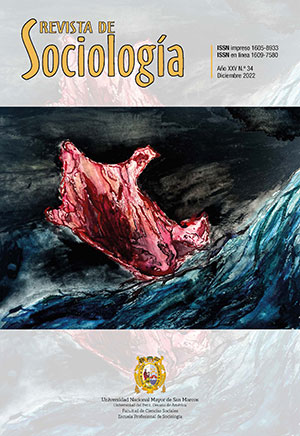Rural architecture. The peasant habitat as current heritage
DOI:
https://doi.org/10.15381/rsoc.n34.24221Keywords:
Traditional architecture, rural area, government policy, cultural heritageAbstract
This paper argues that the architectural typologies of the rural habitat have historical value and validity to understand the socio-territorial processes that make up the rurality scenario. These processes can be understood by recognizing the practices, knowledge and techniques of those who inhabit these territories. For the development of this article, we propose to problematize two situations in communities in the northwest of Córdoba (Argentina), on one hand, the way in which public policies, specifically housing policies, intervene in rurality, ignoring the ways of inhabiting this territory, and on the other hand, the link that this has with architectural rationality, from which spaces are designed that still reproduce foundations based on the universal patterns of western modernity (mainly urban, anthropocentric and colonial). The objective is to delve into these aspects in order to understand how this architecture shapes a historical material and cultural landscape of our societies, and at the same time composes an invisibilized validity by the field of architecture and the intervention of public policies. For which it is proposed to reflect on a view of heritage that puts in value what has been said, and seeks to demystify the rural habitat as something of the past.
Downloads
Published
Issue
Section
License
Copyright (c) 2022 Fernando Vanoli

This work is licensed under a Creative Commons Attribution 4.0 International License.
AUTHORS RETAIN THEIR RIGHTS:
a. Authors retain their trade mark rights and patent, and also on any process or procedure described in the article.
b. Authors retain their right to share, copy, distribute, perform and publicly communicate their article (eg, to place their article in an institutional repository or publish it in a book), with an acknowledgment of its initial publication in the Revista Sociología.
c. Authors retain theirs right to make a subsequent publication of their work, to use the article or any part thereof (eg a compilation of his papers, lecture notes, thesis, or a book), always indicating its initial publication in the Revista Sociología (the originator of the work, journal, volume, number and date).
























